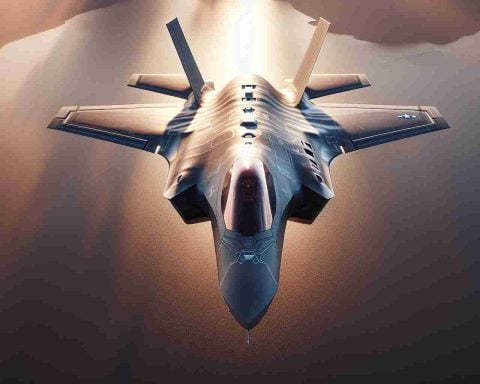The Leopard tank, developed by Germany, has been a prominent force in the modern armored warfare scenario since its inception. As one of the most successful tank designs post-World War II, it has been a central piece in military inventories across numerous countries. Understanding the advantages and disadvantages of the Leopard tank can offer insights into its widespread adoption and its continued development.
Advantages of the Leopard Tank
The Leopard tank series, particularly the Leopard 2, is renowned for its advanced technology and robust firepower. One of the key advantages of the Leopard is its exceptional mobility. The tank is equipped with a powerful engine and sophisticated suspension system, allowing it to traverse various terrains with speed and efficiency. This capability provides significant tactical advantages on the battlefield, enabling rapid offensive maneuvers and strategic positioning.
Another critical benefit is its cutting-edge armor protection. The Leopard 2, for instance, integrates advanced composite armor, which offers superior protection against anti-tank weapons. This armoring is crucial for the survival of the crew in high-intensity conflict scenarios.
Additionally, the Leopard tank boasts a world-class fire control system that ensures excellent accuracy and target acquisition. The incorporation of thermal imaging and range-finding technologies enhances its combat effectiveness, making it a valuable asset during both day and night operations.
Disadvantages of the Leopard Tank
Despite the many benefits, the Leopard tank is not without its drawbacks. A significant disadvantage is its cost. High production, maintenance, and operational costs can be prohibitively expensive for some nations. This financial burden may limit the number of units a country can acquire and maintain, potentially impacting military strategy and readiness.
Furthermore, the weight of the Leopard tank can be a logistical challenge. Its heavy armor contributes to substantial weight, complicating transport and limiting rapid deployment capabilities via air or certain bridges. This heaviness can also impact fuel consumption and maintenance needs.
Lastly, due to its considerable complexity and sophistication, the Leopard tank requires extensive training and support for effective use and maintenance. Armies need to invest significantly in crew training to ensure operational proficiency. This requirement often translates to additional time and resources spent on developing and maintaining a high level of crew expertise.
Conclusion
The Leopard tank remains a formidable component of modern armored forces due to its advanced capabilities in mobility, protection, and firepower. While its high costs, logistical challenges, and complexity present notable disadvantages, the Leopard’s proven track record on the battlefield and adaptability to upgrades and new technology ensure its ongoing relevance in military arsenals worldwide. Understanding these pros and cons is essential for military strategists and policymakers when deciding on the composition of armored forces and in planning future defense procurements.
Exploring More About the Leopard Tank: Tips and Interesting Insights
The Leopard tank, a stalwart in the world of military technology, offers a compelling mix of advantages and challenges. As nations around the globe continue to adopt and adapt Leopard tanks, understanding the nuances of this versatile vehicle is crucial for military enthusiasts, strategists, and policymakers alike. This article delves deeper into the Leopard tank’s highlights and offers intriguing facts, including tips on maximizing its benefits and navigating its complexities.
Maximizing Mobility and Strategic Deployment
To leverage the Leopard’s mobility effectively, military operators must strategically plan operations that exploit its speed and terrain adaptability. Given its powerful engine, one practical tip is to conduct thorough assessments of terrain ahead of engagements, ensuring the tank can utilize its full mobility without unexpected obstructions.
For countries concerned about transport logistics, it’s beneficial to invest in enhancing infrastructural capacities, such as reinforcing bridge structures that can handle the Leopard’s weight, enabling more flexible deployment options. Hybrid logistics involving air and ground transport can be optimized by developing specialized transport units capable of handling the Leopard’s substantial weight.
Optimizing Armor and Defensive Capabilities
The Leopard tank’s superior protection is a testament to its advanced composite armoring. To maintain and enhance its defensive capabilities, regular maintenance and upgrades are essential. Incorporating the latest advancements in armor technology can further bolster its protection, ensuring it remains resilient against evolving anti-tank threats.
Operators can also improve the effectiveness of the Leopard’s armor through strategic battlefield placement, utilizing natural terrain features to minimize exposure and enhance survivability.
Addressing Cost and Training Challenges
Financial considerations play a critical role in the acquisition and maintenance of Leopard tanks. To mitigate the high costs, nations can look into international collaborations for parts and maintenance, reducing individual expenditures and benefiting from shared expertise. Additionally, pursuing cost-effective procurement strategies, such as staggered purchases or lease agreements, can ease financial burdens.
Regarding training, incorporating simulators and virtual reality environments into training programs can enhance crew preparedness while minimizing costs associated with live exercises. Continuous learning and adaptability are key to mastering the sophisticated systems aboard the Leopard tank.
Interesting Facts about the Leopard Tank
1. Global Presence: The Leopard tank series is utilized by over 18 countries, including Germany, Canada, and Greece, reflecting its global appeal and reliability in various climatic and geopolitical conditions.
2. Evolution and Upgrades: Since its inception, the Leopard 2 has undergone numerous upgrades, with the latest variants equipped with advanced digital systems and improved weaponry. This adaptability underscores the Leopard’s enduring relevance in modern combat.
3. Environmental Considerations: Germany has implemented programs to reduce the Leopard’s environmental footprint, focusing on emission reductions and energy-efficient technologies.
Learn More about Military Technologies
If you’re curious to explore further insights into military technologies and their transformative impact on global defense strategies, consider visiting reputable sources like Lockheed Martin or BAE Systems. These platforms offer extensive information on advanced defense systems, innovation, and military collaborations worldwide.
In conclusion, while the Leopard tank embodies a combination of power, resilience, and sophistication, mastering its capabilities and addressing its challenges require strategic foresight and investment. Through careful planning and continual adaptation, military forces can ensure this iconic tank remains a pivotal asset in safeguarding national and international security.
The article has been updated: 2024-11-07 03:42
Here are some suggested related links:
1. Army Times – A leading source for news related to the army and military technology, offering insights into various armored vehicles including the Leopard tank.
2. Defense News – A comprehensive site for defense and military industry news, covering the latest developments and assessments of military equipment like the Leopard tank.
3. Janes – A reputable source for defense and security intelligence, providing expert analysis of military vehicles, including performance assessments of tanks such as the Leopard.
4. Military.com – A resource for military news, benefits, and career information, which often includes detailed articles and reviews of military hardware like the Leopard tank.
5. The Drive – An automotive and military news outlet that explores various military vehicles, including features and assessments of the Leopard tank.
6. Global Defense Corp – An online publication focusing on defense and security topics, providing articles on military vehicles and their advantages and disadvantages.
7. Armored Vehicle Journal – A dedicated platform for discussions and articles related to armored vehicles, including evaluations of tanks such as the Leopard.
8. Naval News – While primarily focused on naval defense, this site occasionally covers land forces as well, providing context on armored vehicles, including the Leopard tank.
9. Defense.gov – The official website of the U.S. Department of Defense, featuring information and reports on various military assets and vehicle assessments worldwide.
10. Military Factory – This site contains detailed specifications and histories of military vehicles, including an in-depth look at the pros and cons of tanks like the Leopard.
The article has been updated. 2024-11-07 18:30
What are the key advantages and disadvantages of the Leopard Tank compared to other main battle tanks?
The Leopard Tank, primarily the Leopard 2 variant, is known for several key advantages, including its high mobility, advanced armor protection, and superior firepower. Its powerful diesel engine provides excellent speed and agility on various terrains, while its composite armor and modular design offer effective protection against modern threats. Furthermore, the Leopard 2 is equipped with a state-of-the-art fire control system, which enhances its accuracy and lethality on the battlefield.
However, there are also notable disadvantages. One significant issue is the high cost of the tank, both in terms of initial procurement and maintenance. This can limit the number of units that a military can field. Additionally, while its design allows for great mobility, it can sometimes be vulnerable in urban combat scenarios due to its size and profile. Lastly, the Leopard tank requires high levels of training and logistics support, which may pose challenges for some militaries looking to adopt it.
















